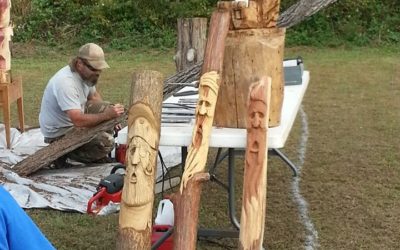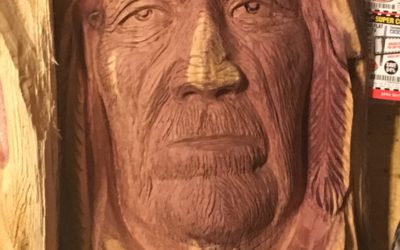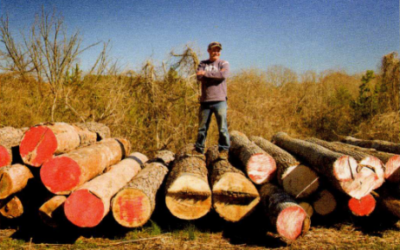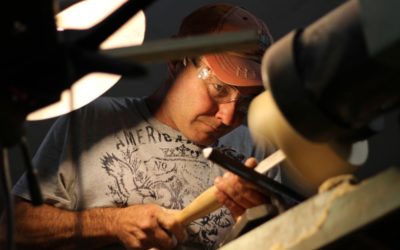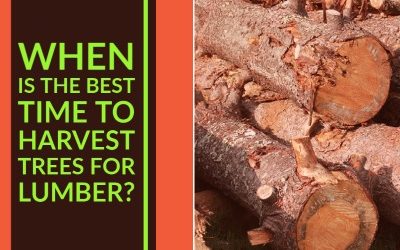
Yes. We ACTUALLY DO mill on your site.
Some “mobile” sawyers prefer you bring your logs to them. Which defeats the purpose, doesn’t it? We actually ARE a mobile saw mill service that mills your logs and stacks the lumber on your site. That’s why, for over 10 years, we’ve been the preferred mobile saw mill for the NC Piedmont, Western NC, Upstate SC and Eastern TN areas.
CALL FOR A QUOTE

CHRIS CARROLL | Owner Operator
EXPERIENCE MATTERS
As a sawyer who’s earned Woodmizer’s Million Boardfoot designation, you can trust me to mill your lumber correctly with the least amount of waste.
My 28+ years experience in the home construction, woodworking and sawmill industries gives me the unique expertise to educate landowners how to best utilize trees from their property for woodworking projects and building materials. Having worked with landowners in Charlotte, Upstate SC and Western NC, I am familiar with local building codes and what’s required to use the timber from your property in your home.
When you hire Chris to mill your lumber, he gives you guidance to share with your tree guy so they cut your logs to the right lengths to meet your needs, whether that’s your builder’s materials list or your personal projects. If you plan to make flooring or other materials that require post-milling process work such as kiln drying or surfacing, Chris will explain what needs to happen at each stage and provide you with contact information for the appropriate service providers.





Not Sure What Services You Need or If a Project is Cost Effective?
Save Hours in Research Time and Avoid Costly Mistakes with a Paid Consultation
By investing in an on-site consultation, you save hours researching what type of trees you have or what they can be used for. You avoid the expense of keeping trees that yield little to no useable lumber or -worse-lose money by paying a tree company to haul off your most valuable logs (which they profit from by selling to a sawmill). Chris provides valuable insights on the type of trees you have, what they’re best used for and how to get the most bang for your buck. He will walk you through the process from start to finish so you know exactly what steps to take when.
F.A.Q.
Frequently Asked Questions
How Much Do You Charge?
For mobile saw milling, we work on a half day and full day basis.
No two jobs are the same and to give an accurate quote, we will need to talk to you. However, we realize you already have a budget in mind and considering whether or not you can afford to hire us. Generally speaking (this is NOT a quote), you can expect to pay on average $1200 per day if you live within an hour and a half of our location. Ideally, we produce 1,000+ board feet of lumber per day, so you would be getting your lumber for $1 per bdft. If you require a skid steer or special equipment, the price will increase.
What Lengths Should I Have the Tree Guy Cut My Logs To?
To get the best quality and quantity from your trees, it's essential to have them cut into proper lengths. You may have a specific project in mind that requires a particular length of board. If not, we suggest cutting your logs in 2 foot increments, starting with 8 feet 6 inches (10'6", 12'6" etc). The extra six inches allows for trimming the ends when it's used for building furniture, siding etc. Due to the time involved, we typically do not mill logs shorter than 6'.
Is It Cheaper to Mill or Buy Lumber?
We understand our clients respect the environment and appreciate using trees they have rather than paying to have them hauled to a landfill. We also understand most clients are on a budget and try to balance the two.
This FAQ requires an in-depth response, which you can find on this blog post.
How to Prep Your Logs for Milling.
To get the most lumber, it is best to saw as quickly as the trees are cut. If this is not possible, there are some steps you can take to preserve the tree for milling. These steps should be taken if more than a month will pass between the time it's on the ground and the time you have it sawed. First, raise the logs off the ground at least 4-6 inches and keep the grass around them trimmed. This discourages insects. Second, to avoid shrinking and cracking, seal the ends of the logs soon after cutting. You will want to use a wax, a heavy coat of paint or a product like Anchor Seal. Simply "paint" the ends of the logs to seal the end grain. If you are just now reading this and did not seal your ends, no worries! Most likely you'll only end up with shorter lumber.
Also, time is money so the more time we spend cleaning your logs of mud, nails and other debris, the less time we spend milling and the less lumber you get for your price. It is in your best interest to either keep your logs mud free when positioning them for milling. If they do get mud or debris on them, use a wire brush to remove any mud or debris on your logs.
What are the Largest and Smallest Diameter Logs You Can Mill?
Log diameter is also important. Logs should be between 10" and "32 inches in diameter. We can saw smaller logs but be advised it will take longer to yield a specific quantity of lumber this way. You will get more bang for your buck by milling logs larger than 10" in diameter. Also, our mill can not handle logs larger than 38" in diameter.
How Can I Reduce the Cost of Milling?
Have the Prep Work Done Before We Get There
The main way to reduce your milling costs is by being prepared and reducing the amount of time we are on site. You can do this a number of ways. First, make sure your logs are clean and trimmed. We prefer to arrive, setup and start cutting. This maximizes the amount of lumber you get for your money. Sometimes, though, this is not possible. You can save money by having the prep work done when we arrive. What is prep work? This entails having your tree guys (if it’s not us) to keep the logs as clean as possible. This means do not drag the logs through mud to the saw mill staging area. It also helps to have them stacked neatly in piles near a flat area where we will set up. Have the branches removed so that all that’s left are the trunks or branches large enough to saw (larger than 10″ in diameter). We also prefer them cut to the length you will want your boards (otherwise we have to cut them). For instance, if you want 8 foot long boards, the tree lengths need to be cut at 8 foot 6 inches. Always add 6 inches to the length to allow for end cracking during the drying process.
Check For Foreign Objects
Second, make sure the log is free of foreign objects. We have found rocks, nails, clothes line supports – all kinds of hard objects embedded in trees. These objects will break our blade on contact, which will cost you $30 per blade to replace. The majority of these items can be found using a metal detector. If you have one (or can borrow one), it will save us the time of inspecting each log with our metal detector, thereby saving you money as well.
Have All Your Logs Staged in One Location
Third, try to have all your logs in one location. It takes approximately 30 minutes each time we move and re-setup the saw mill. Time is money, friend. If we have to move more than once, there is a $25 charge for each additional move.
Turning Beloved Trees into Treasured Heirlooms
Chris Carroll talks transforming trees into treasured heirlooms using his mobile milling service.
What Makes Us Different
We’re not in the milling business. We’re in the memory making business.
Can Storm Damaged Trees be Used for Lumber?
This article tells you how to get the best use out of those trees that came down during a storm.
Carroll Woodcrafts Featured in Tryon Daily Bulletin
NC Rural Center promotes GATE success story Carroll Woodcrafts.
Chris Featured on Entrepreneurship News
Chris Carroll discusses his craft with Arlene Childers.
Chris Carroll featured on NPR’s Morning Edition
NPR’s Pam Bunch asks Chris what it takes to be successful in business.
Chris Carroll GATE Success Story
Advantage West covers Chris being chosen as the GATE small business success story.
Which is Cheaper – Hiring a Saw Mill or Buying your Lumber?
The pros and cons of milling lumber from your property vs buying it from a retailer.
When is the Best Time to Harvest Trees for Lumber?
This article tells you the best time of year to harvest your trees for use as lumber.
Our Service Areas
We serve the entire southeastern United States but mostly North and South Carolina, including: Charlotte, Fort Mill, Hickory, Morganton, Greenville SC and Simpsonville SC. We do travel farther for larger jobs. Contact us for more info.
Office Hours
M-F: 9:00 am – 5:30 pm, Sat 8:30-Noon
Closed Sundays




